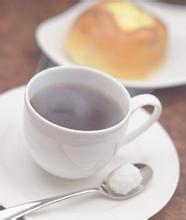Introduction to the characteristics of Hawaiian Coffee Flavor description and the planting Environment of varieties
Hawaii is the largest island in the Hawaiian Islands, so it is also called the Big Island. Kona coffee is grown in the west and south of Kona area of Hawaii Island. Coffee trees are spread all over the slopes of Hualalai and Mauna Loa, which are 150 meters to 750 meters above sea level, which is suitable for coffee growth.
The excellent quality of Kona coffee is due to its location and climate. Coffee trees grow on the slopes of volcanoes, and their geographical location ensures the altitude required for coffee growth; the dark volcanic ash soil provides the minerals needed for coffee growth; the climatic conditions are very suitable, and the sun gently passes through the air filled with moisture in the morning, and in the afternoon, the mountains become more humid and foggy, and the clouds in the air are natural umbrellas for coffee trees, and at night they become clear and cool, but no frost falls. Natural conditions allow for high average yields of 2240 kg/ha compared to 600 - 900 kg/ha in Latin America
The Europeans discovered Hawaii by accident. They were originally looking for a legendary passage to the east to produce spices, but instead they found the richest pearl in the Pacific Ocean. A captain named James Cook landed at Kauai in 1778 to supply his ships. He encountered severe cold and storms on his way back, and had to return to Hawaii early the following year and anchor on a beach in Kona. Since then, the Hawaiian Islands have become important stopovers on the world trade routes. Hawaii's chiefs traded sandalwood, a native of the island, for weapons, goods and livestock with passing ships. From the 1820s, Western religion began to spread widely on the island, and many churches built in that era are still in use today.
Hawaii's tourism industry is developed. Visitors can visit coffee farms, see or participate in various processes such as coffee harvesting, coffee bean processing, roasting and grinding, and make a cup of coffee that really belongs to them. There are about 600 independent coffee farms in the Kona area, most of which are small family farms, usually between 18 and 42 acres. Kona coffee can bring in more than $10 million a year to these coffee farms.
Kona coffee has always been grown using the family farming model. At first, only men were allowed to work in the coffee garden, but later women joined in. Hawaiian family production was more dependent on family effort than on hiring workers, so it was normal for Hawaiian families to have eight or nine children. Since then, new immigrants from the Philippines, the United States and Europe have come to Hawaii to engage in coffee farming. Over time, Hawaii has formed a social atmosphere centered on family culture and easy to absorb foreign culture, which has become a major feature of Hawaii.
Hawaii is also a paradise for coffee tasting and buying. Each island has several unique places for tourists and locals to taste and buy coffee, ranging from cozy shops to comprehensive coffee knowledge centers. Real Hawaiian Kona coffee gives you a unique pleasure and leads you slowly into the transcendent state of coffee tasting. And this is all from the oldest Arabica coffee tree.

Important Notice :
前街咖啡 FrontStreet Coffee has moved to new addredd:
FrontStreet Coffee Address: 315,Donghua East Road,GuangZhou
Tel:020 38364473
- Prev

Introduction to the characteristics of Colombian Coffee Flavor description and Fine Coffee
The export management of the coffee trade in Colombia is mainly the responsibility of the National Federation of Coffee owners. It is an unofficial industry organization with several government ministers as its members. Colombian law clearly stipulates that only private businessmen with federation licenses can export coffee, in order to maintain the image of Colombian coffee in the world and to ensure the stability of the government in the coffee trade.
- Next

Costa Rican Coffee Flavor Description Processing Characteristics Variety Producing Area Taste Planting Environment Introduction
Coffee was introduced to Costa Rica from Cuba in 1729, and today its coffee industry is one of the most well-organized in the world, producing up to 1700 kilograms per hectare. Costa Rica has a population of 3.5 million, but coffee trees number 400 million, and coffee exports account for 25% of the country's total exports. The volcanic soils of Costa Rica are very fertile and well drained, especially in the central part.
Related
- Detailed explanation of Jadeite planting Land in Panamanian Jadeite Manor introduction to the grading system of Jadeite competitive bidding, Red bid, Green bid and Rose Summer
- Story of Coffee planting in Brenka region of Costa Rica Stonehenge Manor anaerobic heavy honey treatment of flavor mouth
- What's on the barrel of Blue Mountain Coffee beans?
- Can American coffee also pull flowers? How to use hot American style to pull out a good-looking pattern?
- Can you make a cold extract with coffee beans? What is the right proportion for cold-extracted coffee formula?
- Indonesian PWN Gold Mandrine Coffee Origin Features Flavor How to Chong? Mandolin coffee is American.
- A brief introduction to the flavor characteristics of Brazilian yellow bourbon coffee beans
- What is the effect of different water quality on the flavor of cold-extracted coffee? What kind of water is best for brewing coffee?
- Why do you think of Rose Summer whenever you mention Panamanian coffee?
- Introduction to the characteristics of authentic blue mountain coffee bean producing areas? What is the CIB Coffee Authority in Jamaica?

